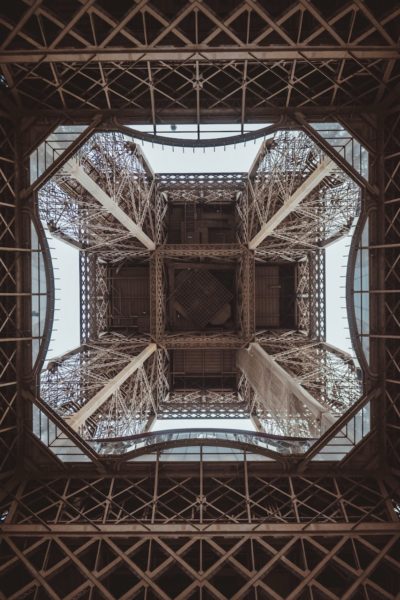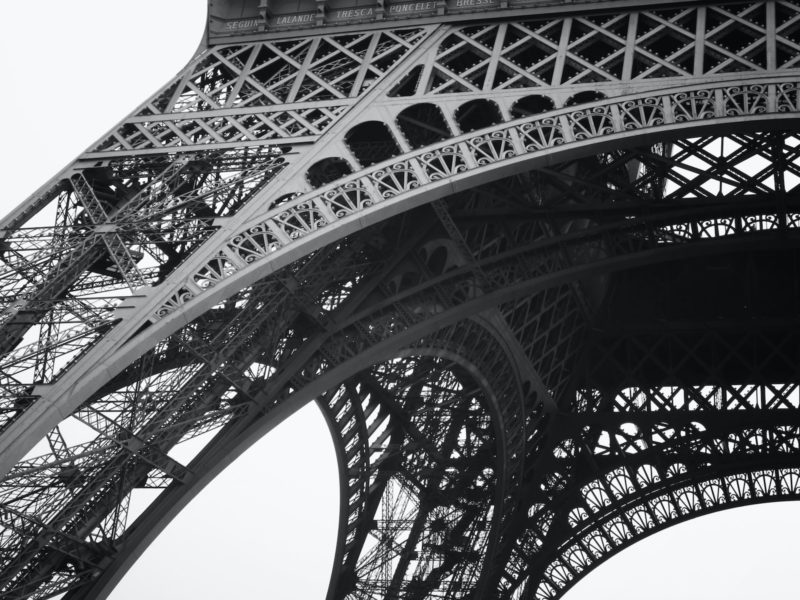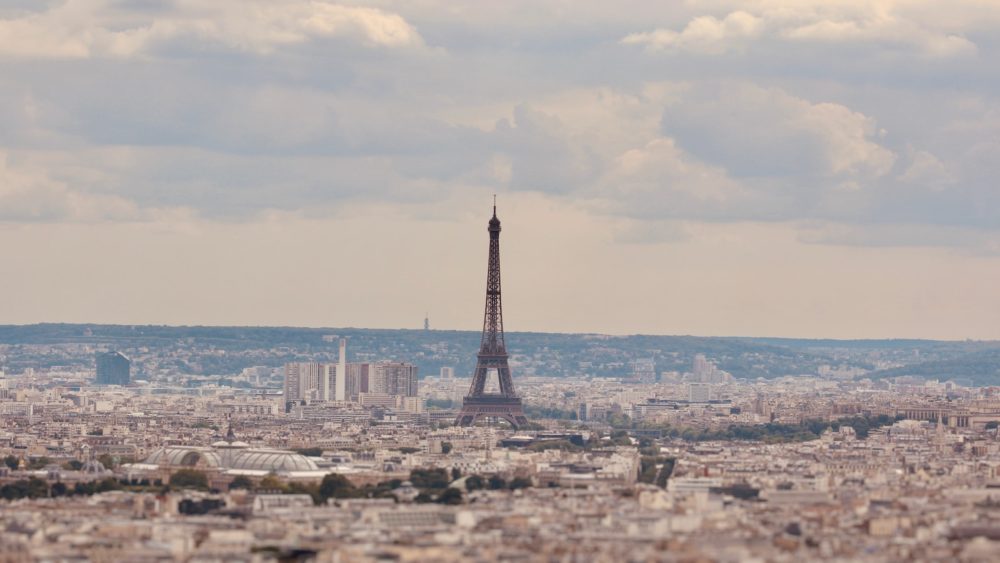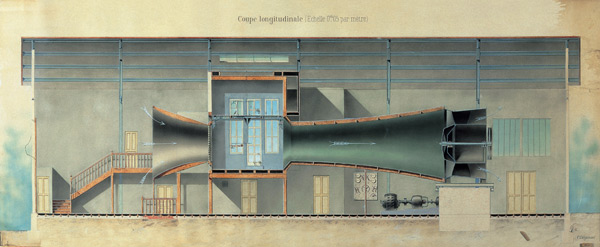Over the past century, the world has been a privileged observer of some of the most luminous minds in history. From the intricate realms of physics to the abstract wonders of mathematics and onto the pragmatic fields of engineering, a few names have left indelible marks, their legacies casting long shadows over the sands of time. Among these towering figures stands Gustave Eiffel, an emblematic genius whose contributions have defined an era and have continued to inspire generations long after his departure.
This year, as we approach the poignant milestone of the 100th anniversary of Eiffel’s death, it becomes imperative for us to pause, reflect, and pay homage to this unparalleled architect and engineer. Eiffel’s name is not merely associated with a structure or a design; it symbolizes ambition, innovation, and the audacious human spirit that dares to dream beyond the ordinary. His magnum opus, the Eiffel Tower, punctuating the Parisian skyline, serves as a testament to human potential and is, to this day, a beacon of inspiration for many.
This article endeavours to traverse the remarkable journey of Gustave Eiffel, charting some of the pivotal moments of his life and career. Through this exploration, we aim not just to chronicle his achievements but to immerse our readers in the essence of a man who, with his passion and vision, reshaped the boundaries of engineering and architecture. As we commemorate the centennial of his passing, let us delve deep into the story of a legend who, in every sense, touched the sky.

Gustave Eiffel: The Birth of the Greatest Civil Engineers of All Times
In the annals of engineering and architecture, few names shine as brightly as Alexandre Gustave Eiffel. Born in the picturesque Côte-d’Or region of France in 1832, Eiffel’s beginnings were not overtly indicative of the legacy he was to create. His family, having roots in the German town of Marmagen, adopted the name ‘Eiffel’ in homage to the Eifel mountains from which they originated. A propensity marked Gustave’s initial years for many subjects, from literature to history. However, it was the influential figures in his early life, notably his uncle Jean-Baptiste Mollerat and chemist friend Michel Perret, who instilled in him a fascination for subjects as varied as theology, philosophy, chemistry, and mining.
Eiffel’s academic journey, though starting with an ambivalence towards traditional schooling, began to find direction and purpose. His tenure at the prestigious École Centrale des Arts et Manufactures in Paris was notably defining. Specializing in chemistry and graduating with impressive laurels, Eiffel was inexorably drawn to the engineering world. The 1855 World’s Fair in Paris, for which his mother procured a season ticket, likely fanned the flames of this burgeoning passion.
Both challenges and opportunities marked the early stages of Eiffel’s career. While familial disputes and corporate bankruptcies posed obstacles, they opened doors to invaluable experiences. His association with the railway engineer Charles Nepveu, for instance, introduced him to the intricate art of bridge design. The Bordeaux bridge project, particularly, became a testament to Eiffel’s exceptional skills and innovative techniques, such as using compressed air caissons and hydraulic rams.
As Eiffel’s reputation grew, so did the magnitude and importance of his projects. Collaborations with esteemed contemporaries like Jean Baptiste Krantz and Wilhelm Nordling enriched his portfolio. Still, it was perhaps his involvement in the Exposition Universelle of 1867, where he was pivotal in shaping the Galerie des Machines, that genuinely showcased his prowess in combining aesthetics with engineering. This project, intertwined with his invaluable research on the structural properties of cast iron, cemented Eiffel’s status as a prodigious force in civil engineering.
Looking back at Gustave Eiffel’s early life and career, it’s evident that a blend of innate talent, influential mentors, and invaluable experiences converged to mould an engineering maestro—a maestro whose structures would not just touch skylines but also the very heart of history.
End of the 19th Century: The serious matters began!
In the late 1860s, the ambitious Gustave Eiffel founded his workshop in Levallois-Perret. One of his initial significant commissions included two viaducts for the railway line connecting Lyon and Bordeaux. His expertise and innovative approach allowed him to execute projects internationally, such as the prefabricated all-metal St. Mark’s Cathedral in Arica, Peru, which was shipped piece by piece from France after an earthquake had destroyed the original.

In 1868, Eiffel collaborated with Théophile Seyrig, forming Eiffel et Cie. By 1875, their ventures expanded to projects like the Budapest Nyugati railway station and a pioneering bridge over Portugal’s river Douro. The latter posed a challenge due to the river’s depth and rapid flow, requiring a span greater than any existing arch bridge. Eiffel’s groundbreaking design impressed the authorities, culminating in the ceremonial opening by King Luís I and Queen Maria Pia in 1877.

The 1878 Exposition Universelle marked a pivotal moment for Eiffel, solidifying his stature amongst the engineering elite. Not only did he showcase his company’s innovations, but he was also entrusted with constructing several of the exhibition buildings. This event sparked Eiffel’s first collaboration with architect Stephen Sauvestre.
By 1879, Eiffel had dissolved his partnership with Seyrig and renamed his firm the Compagnie des Établissements Eiffel. The same year saw the commencement of the Garabit viaduct project, a venture akin to the Douro bridge. His team expanded, welcoming talents like Maurice Koechlin and Émile Nouguier, who later played vital roles in the Eiffel Tower’s creation.
Additionally, Eiffel initiated a revolutionary system of standardised prefabricated bridges. These designs were modular, transportable, and required less skilled labour due to the bolted, rather than riveted, assembly.
However, one of the most iconic collaborations was with Auguste Bartholdi in 1881 concerning the Statue of Liberty. Bartholdi required an engineer to assist in actualizing this monumental gift to America. After the initial engineer, Eugène Viollet-le-Duc, passed away, Eiffel was approached due to his expertise with wind stresses. Eiffel’s genius lay in devising a four-legged pylon structure, ensuring the statue’s stability. Remarkably, the entire statue was assembled in Paris before being dismantled and shipped to the U.S.

By 1886, Eiffel’s influence extended to the field of astronomy. He designed the world’s largest dome for the Astronomical Observatory in Nice, showcasing a patented bearing device, an epitome of his ingenious engineering skills.
In summary, Gustave Eiffel’s engineering prowess defined an era with projects spanned continents. From railway stations to bridges and the iconic Statue of Liberty, his legacy symbolises innovation, resilience, and visionary thinking.
The Genius of the Eiffel Tower
When one thinks of Paris, the immediate image that comes to mind is the iconic Eiffel Tower. Erected in 1889, it stands as a symbol of architectural marvel and the indomitable spirit of human ingenuity. But how was this iron giant born, and what makes it so unique?



Birth of a Masterpiece: The Eiffel Tower, or “La Tour Eiffel” in French, was conceived as the centrepiece for the 1889 Exposition Universelle, a world fair marking the 100th anniversary of the French Revolution. Paris wanted a monument that would not only pay homage to this historical event but also showcase France’s prowess in the fields of art, engineering, and industry. Thus, the ambitious project of building a 300-meter-tall iron structure was announced, eliciting excitement and scepticism.
Architectural Marvel: Designed by the brilliant engineer Gustave Eiffel and his team, the tower’s structure was revolutionary. Its lattice framework, comprising over 18,000 individual iron parts, was held together by more than 2.5 million rivets. This open-frame design meant that wind resistance was minimized, ensuring stability even under extreme conditions. At the time of its construction, many doubted its feasibility, but Eiffel’s genius lay in his ability to combine form with functionality.
Material and Size: Built primarily using iron, the tower weighs approximately 7,300 tons. But if melted down, its metal would only fill up its 125-meter square base to a mere 6cm deep – a testament to its efficient use of material. Standing at 324 meters tall, including antennas, it was the tallest man-made structure in the world until the completion of the Chrysler Building in New York in 1930.
Uniqueness and Legacy: Apart from its sheer size, what truly sets the Eiffel Tower apart is its adaptability. Originally criticized by some for its design, the tower has since become an enduring symbol of Paris and the avant-garde spirit of the time. It has also served various purposes, from scientific experiments to broadcasting signals.

The Eiffel Tower isn’t just a monument; it’s a testament to the possibilities of human imagination, engineering prowess, and the audacity to dream big. Every rivet, beam, and curve speaks of a time when the boundaries of construction were pushed, and a new era of architectural wonders was ushered in. Gustave Eiffel engraved on the tower the names of 72 French scientists, engineers and mathematicians in recognition of their contributions to the building of the tower. Eiffel chose this “invocation of science” because he was concerned about the artists’ protest. At the beginning of the 20th century, the engravings were painted over, but they were restored in 1986–87 by the Société Nouvelle d’exploitation de la Tour Eiffel, a company operating the tower.
Gustave Eiffel: Beyond the Tower
While the Eiffel Tower stands as an indelible testament to Gustave Eiffel’s engineering prowess, his contributions to science extended far beyond this iconic structure. After stepping away from the Compagnie des Etablissements Eiffel, his curiosity led him to profound work in meteorology and aerodynamics, spurred in part by the challenges of wind forces he had encountered during his architectural ventures.
Eiffel’s aerodynamic experiments began quite innovatively. He dropped surfaces, attached with measuring devices, down a cable running from the tower’s second level to the ground. Through these experiments, he deduced that a body’s air resistance was almost directly proportional to the square of its airspeed. Not stopping there, in 1905, he constructed a laboratory at the Champ de Mars near the tower’s base. This location saw the birth of his first wind tunnel in 1909, which was crucial in investigating the aerodynamics of early aviation pioneers, including the Wright Brothers and Louis Blériot. Eiffel’s groundbreaking conclusion that an airfoil’s lift resulted from decreased air pressure above it, rather than increased pressure below laid foundational principles for future aeronautical engineering.


However, his dedication to science wasn’t without its challenges. Due to noise complaints, Eiffel shifted his experiments to Auteuil in 1912, building an even more giant wind tunnel. By 1913, his immense contributions were internationally recognized when the Smithsonian Institution honoured him with the Samuel P. Langley Medal for Aerodromics. Celebrated inventor Alexander Graham Bell, in his presentation speech, hailed Eiffel’s works on air resistance as “classical,” emphasizing their vital role in underpinning aviation’s scientific principles.
Eiffel’s passion for understanding the natural world didn’t end with aerodynamics. As early as 1889, he had equipped the Eiffel Tower with meteorological instruments. Later, he set up a weather station at his residence in Sèvres, embarking on an extensive data compilation journey from 1891-1892 that expanded to 25 diverse locations across France.
The culmination of Eiffel’s illustrious life came on 27 December 1923. In the comforting confines of his Rue Rabelais mansion in Paris, with the soulful strains of Beethoven’s 5th Symphony’s andante playing, Eiffel took his last breath. He was laid to rest in the family mausoleum at Levallois-Perret Cemetery.
Indeed, while the Eiffel Tower remains a symbol of his architectural genius, Gustave Eiffel’s legacy is further enriched by his insatiable curiosity and invaluable contributions to science.
José Amorim
Information sourced by the author for luxuryactivist.com. All content is copyrighted with no reproduction rights available. Images are for illustration purposes only. Featured image from Gustave Eiffel source here.
